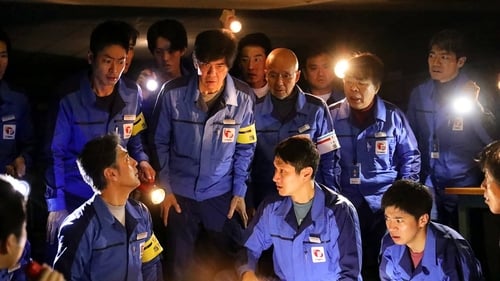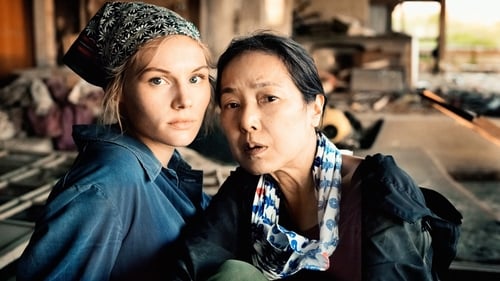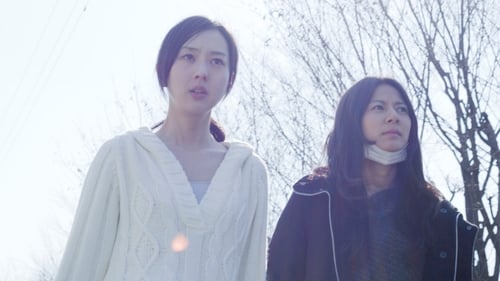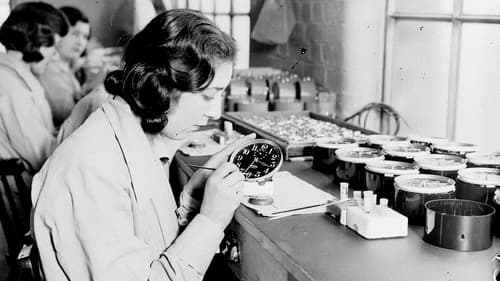311 (2012)
Género : Documental
Tiempo de ejecución : 1H 34M
Director : Tatsuya Mori, Takeharu Watai, Yoju Matsubayashi
Sinopsis
Two weeks after the earthquake, writer and movie director Tatsuya Mori, journalist Takeharu Watai, movie director Yojyu Matsubayashi, and movie producer Takuji Yasuoka, headed for the disaster stricken area, not thinking this film would become a production. "Only to confirm the situation" was their common objective.

Los trabajadores de las instalaciones de Fukushima Daiichi en Japón arriesgan su vida a diario permaneciendo en la central nuclear para evitar su desintegración total después de que la región haya sido totalmente devastada por un terremoto y un posterior tsunami en 2011.

La cinta dirigida por Stephen Nomura Schible se centra en la vida del compositor de renombre Ryuichi Sakamoto. Por tanto, este documental revive la prolífica carrera de este artista, quien lleva trabajando más de cuatro décadas. De esa forma asistimos a la evolución de Sakamoto, desde sus inicios con el techno-pop hasta que se convirtió en un ganador de la Academia, consiguiendo el Oscar por ?El último emperador?. Pero además de su dedicación al mundo de la música, Sakamoto ha demostrado ser también una figura muy importante en el movimiento social contra las nucleares del lugar. Eric Nyari y Yoshiko Hashimoto son los productores de la película, mientras que Neo Sora y Tom Richmond son los directores de fotografía que acompañan a Stephen Nomura Schible en este viaje. (ECartelera)

Una joven alemana entabla amistad con una mujer mayor japonesa durante un tour por la región de Fukushima, una zona afectada por el terremoto en del 2011 en Japón. Marie (Rosalie Thomas) ha decidido viajar de Alemania a Fukushima para cambiar su vida. Con su trabajo en la organización Clowns4Help espera llevar un poco de esperanza a los supervivientes del desastre nuclear. Pronto se da cuenta que no está capacitada para hacer más llevadera la tragedia de los afectados. Pero en lugar de huir decide quedarse con la arisca anciana Satomi (Kaori Momoi), la última geisha de Fukushima que decidió volver a su casa en ruinas en la antigua zona de exclusión. Dos mujeres totalmente diferentes pero que, cada una a su modo, están atrapadas en el pasado y deben aprender a liberarse de la culpa y de la carga de los recuerdos.

Descubre cómo este desastre industrial cambió el curso de la Historia, trastocó la geopolítica mundial y, directa o indirectamente, reorganizó los equilibrios y las relaciones de poder del siglo XX.

¿Qué es lo que salvo a la ciudad de Tokyo del desastre nuclear? Se permite acceder a un equipo de periodistas extranjeros -incluyendo al reportero Pio d'Emilia- a las instalaciones de la planta nuclear de Fuskushima-Daiichi; han estado esperando durante dos años para desvelar la verdad que se encuentra oculta tras los muros de esa planta. El ex-primer ministro Naoto Kan nos traslada de nuevo a los días del accidente y narra los eventos tal y como sucedieron entonces. Las animaciones manga representan la historia de Japón, mientras que las reconstrucciones digitales permiten que aflore el lado más oscuro de esta historia, demasiado compleja tanto social como científicamente. Ya no hay meros sospechosos: muchos de los que fueron acusados han de ser responsabilizados por la catástrofe.

In the aftermath of the Fukushima nuclear disaster, a Japanese farmer ekes out a solitary existence within the radiation red zone.

Since 1950, there have been 32 nuclear weapon accidents, known as "Broken Arrows." A Broken Arrow is defined as an unexpected event involving nuclear weapons that result in the accidental launching, firing, detonating, theft or loss of the weapon. To date, six nuclear weapons have been lost and never recovered.Now, recently declassified documents reveal the history and secrecy surrounding the events known as "Broken Arrows". There have been 32 nuclear weapon accidents since 1950. Six of these nuclear weapons have been lost and never recovered. What does this say about our defense system? What does this mean to our threatened environment? What do we do to rectify these monumental "mistakes"? Using spectacular special effects, newly uncovered and recently declassified footage, filmmaker Peter Kuran explores the accidents, incidents and exercises in the secret world of nuclear weapons.

Fukushima's Minami-soma has a ten-centuries-long tradition of holding the Soma Nomaoi ("chasing wild horses") festival to celebrate the horse's great contribution to human society. Following the meltdown of the Fukushima Daiichi Nuclear Power Plant in the wake of the March 11, 2011 earthquake and tsunami, local people were forced to flee the area. Rancher Shinichiro Tanaka returned to find his horses dead or starving, and refused to obey the government's orders to kill them. While many racehorses are slaughtered for horsemeat, his horses had been subjected to radiation and were inedible. Yoju Matsubayashi, whose "Fukushima: Memories of the Lost Landscape" is one of the most impressive documentaries made immediately after the disaster, spent the summer of 2011 helping Tanaka take care of his horses. In documenting their rehabilitation, he has produced a profound meditation on these animals who live as testaments to the tragic bargain human society made with nuclear power.

We return to Fukushima five years after the nuclear disaster caused by a tsunami. What issues does the clean up operation face? What progress has been made in dealing with this major disaster, especially in the detection and removal of melted nuclear fuel?

The referendum whether nuclear power plants should be banned has been held in Japan. People must decide their future.

Every nuclear weapon made, every watt of electricity produced from a nuclear power plant leaves a trail of nuclear waste that will last for the next four hundred generations. We face the problem of how to warn the far distant future of the nuclear waste we have buried --but how to do it? How to imagine the far-distant threats to the sites, what kinds of monuments can be built, could stories or legends safeguard our descendants? Filmed at the only American nuclear burial ground, at a nuclear weapons complex and in Fukushima, the film grapples with the ways people are dealing with the present problem and imagining the future. Part observational essay, part graphic novel, this documentary explores the idea that over millennia, nothing stays put.

More than four years after the Fukushima Dai-Ichi disaster, the invisible radioactivity is still omnipresent, but gradually vanishing from the locals 's mind.

Eiko Kanno is a 79 year old grandmother whose life has been completely changed by the nuclear disaster in Fukushima. Her life should have been with her grandchildren but because of the disaster which caused her entire village of Iitate to be evacuated. She now lives by herself in temporary housing. Yoshiko Kanno and her extended family are very important to her changed life. Yoshiko Kanno lost her parents in the evacuation and she found herself living next door to Eiko Kanno. They entertain themselves by telling jokes to each other like a comedic duo. They now live together.

Saeko and Yukako live together in a small apartment complex in Tokyo. After the Tohoku earthquake in 2011, both live in a state of unease. Saeko, who is in a divorce, is worried that her daughter is exposed to radiation. Yukako is also afraid of radiation and tries to convince her husband to move. The two become friends after Yukako tries to save Saeko after a suicide attempt.

After the 11 March 2011 tsunami and nuclear disaster, residents of Futaba, a town in Fukushima Prefecture, are relocated to an abandoned high school in a suburb of Tokyo, 150 miles south. With a clear and compassionate eye, filmmaker Atsushi Funahashi follows the displaced people as they struggle to adapt to their new environment. Among the vivid personalities who emerge are the town mayor, a Moses without a Promised Land; and a farmer who would rather defy the government than abandon his cows to certain starvation.

Chernobyl 1986. A nuclear reactor exploded, spewing out massive quantities of radiation into the atmosphere. Within days, the pollution had spread across Europe. Living on land contaminated with radioactivity would be a life-changing ordeal for the people of Belarus, but also for the Sami reindeer herders of central Norway. It even affected the Gaels of the distant Hebrides. Five years ago there was a meltdown at the Fukushima reactor, and thousands of Japanese people found their homes, fields and farms irradiated, just as had happened in Europe. This international documentary, filmed in Belarus, Japan, the lands of Norway's Sami reindeer herders and in the Outer Hebrides, poses the question: what lessons have we learned?

At 2:46 PM on March 11, 2011, the Fukushima Daiichi Nuclear Power Plant experiences a black out due to the aftermath of the Tōhoku earthquake and tsunami. The cooling system fails at the nuclear power plant and the temperature of the nuclear reactor rises. The worst case is coming. Scientists face an unexpected situation and government officials are confused by lack of information. Residents says goodbye to their hometown before evacuating.

The exciting story of the splitting of the atom, a scientific breakthrough of incalculable importance that ushered in the nuclear age, has a dark side: the many events in which people were exposed to radiation, both intentionally and by accident.

The Japanese population’s reaction to the catastrophe of March 2011 has been described as “stoic” by the Western media. The Japanese code of conduct is indeed deeply rooted in their Buddhist traditions, and young filmmakers Tim Graf and Jakob Montrasio observe in detail what this means for the people and their religion. At graveyards, in temples, at monasteries and with families, they question the impact this triple affliction has had on the lives and beliefs of the inhabitants. How deeply do their beliefs affect their grieving? What role do the monks play in assisting people with their grief? And, what effects has this enormous catastrophe had on their religious rituals? SOULS OF ZEN inserts the events of March 2011 into the context of traditional Zen Buddhism, examining Japan’s religiousness and the beliefs of those practising it at a crucial turning point.












